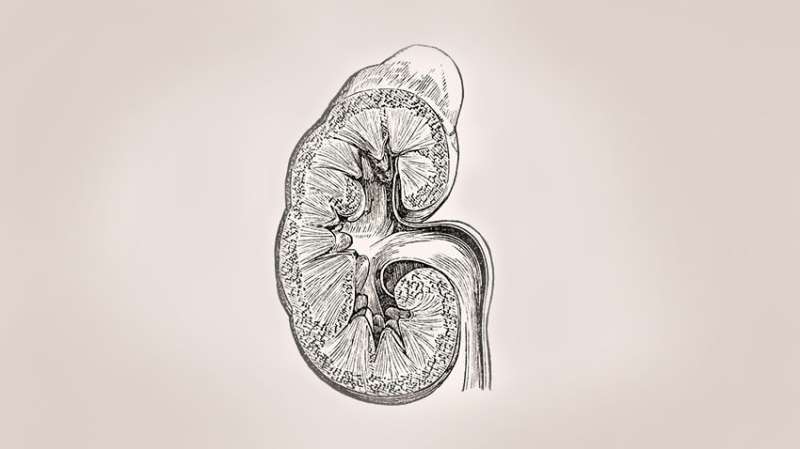High burden, high cost and low awareness of kidney disease in the United States

According to an annual data report from the United State Renal Data System, the overall burden of kidney disease remains high in U.S. with the rates of kidney failure requiring dialysis or kidney transplantation ranking among the highest in the world.
The prevalence of earlier stages of chronic kidney disease (CKD), while relatively stable at 14.8 percent, implies that an estimated 30 million American adults have CKD, with millions of others at increased risk. In 2015, 124,111 new cases of end stage renal disease (ESRD) were reported with a total of nearly 500,000 patients receiving dialysis treatment and well over 200,000 living with a kidney transplant. Trends in the prevalence of chronic kidney disease are important for health care policy and planning.
This year's report provides data through 2015 and is released by the USRDS coordinating center based at the University of Michigan Kidney Epidemiology and Cost Center, in partnership with Arbor Research Collaborative for Health.
The cost to care for patients with CKD is also significant. In 2015, the total Medicare spending for beneficiaries with kidney disease was nearly $100 billion. This included over $64 billion in spending for all Medicare beneficiaries who have CKD and another $34 billion for beneficiaries with ESRD.
In sharp contrast to the high burden and cost, is the low awareness about the condition among patients with kidney disease, especially those in stages 1 to 3. This may well relate to low levels of urine testing for protein among those with risk factors for the disease or quite simply the consequence of poor access to care among disadvantaged populations. This represents a major road block in the efforts toward preventing progressive kidney failure with high rates of premature morbidity, mortality, risk of end stage renal disease, and high societal cost.
"Over a third of patients starting dialysis have not had the benefit of being evaluated by a kidney doctor prior to this life changing event," says Rajiv Saran, M.D., professor of internal medicine at the University of Michigan and director of the USRDS coordinating center. "Whereas kidney disease is often silent until late stages, there are missed opportunities to detect it early and implement therapies that can slow kidney disease progression. If we can target individuals with risk factors for disease, we can do a lot to prevent kidney failure and other devastating consequences."
Other important highlights from the report include:
- The one-year end-stage renal disease patient mortality among the 0-4-year age group has declined approximately 41.6 percent over the past decade. This is good news.
- The kidney allocation system policy changes resulted in a first time decrease in kidney transplant waiting list by 2.3 percent. While too soon to predict longer term benefits, the new policy may assist minorities and low-income persons, who often take longer to get waitlisted.
- Incidence rates of end-stage renal disease have stabilized in the U.S., however there are large variations around the country with many hotspots.
- Eighty percent of patients still use catheters as the main vascular access at initiation of hemodialysis. This must change, as catheters predispose to serious infections and higher mortality.
- Seventeen percent of patients used an arteriovenous fistula exclusively at dialysis initiation. This increased to 65 percent by the end of one year on hemodialysis, and to 72 percent at the end of two years.
- Between 2001 and 2015, adjusted mortality rates decreased by 28 percent for dialysis patients. The net reductions in mortality from 2001 to 2015 were 27 percent for hemodialysis patients and 41 percent for peritoneal dialysis patients. However, since there appears to be a stabilization in mortality rates in recent years, there is no room for complacency.
- In 2013, Medicare patients aged 66 years and older who were hospitalized for an acute kidney injury (AKI) had a 35 percent cumulative probability of a recurrent AKI hospitalization within one year.
















